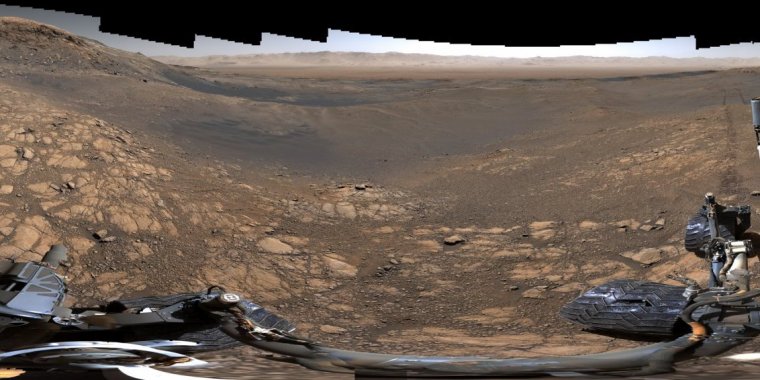| News / Space News |
Curiosity Mars Rover Snaps Its Highest-Resolution Panorama Yet
NASA's Curiosity rover has captured its highest-resolution panorama yet of the Martian surface.

Composed of more than 1,000 images taken during the 2019 Thanksgiving holiday and carefully assembled over the ensuing months, the composite contains 1.8 billion pixels of Martian landscape.
The rover's Mast Camera, or Mastcam, used its telephoto lens to produce the panorama; meanwhile, it relied on its medium-angle lens to produce a lower-resolution, nearly 650-million-pixel panorama that includes the rover's deck and robotic arm.
Both panoramas showcase "Glen Torridon," a region on the side of Mount Sharp that Curiosity is exploring. They were taken between Nov. 24 and Dec. 1, when the mission team was out for the Thanksgiving holiday.
Sitting still with few tasks to do while awaiting the team to return and provide its next commands, the rover had a rare chance to image its surroundings from the same vantage point several days in a row.
It required more than 6 1/2 hours over the four days for Curiosity to capture the individual shots. Mastcam operators programmed the complex task list, which included pointing the rover's mast and making sure the images were in focus.
To ensure consistent lighting, they confined imaging to between noon and 2 p.m. local Mars time each day.
"This is the first time during the mission we've dedicated our operations to a stereo 360-degree panorama," said Ashwin Vasavada, Curiosity's project scientist at NASA's Jet Propulsion Laboratory, which leads the Curiosity rover mission. (NASA)
YOU MAY ALSO LIKE





